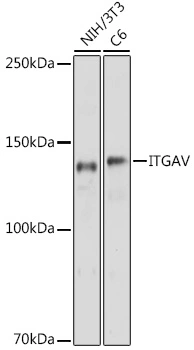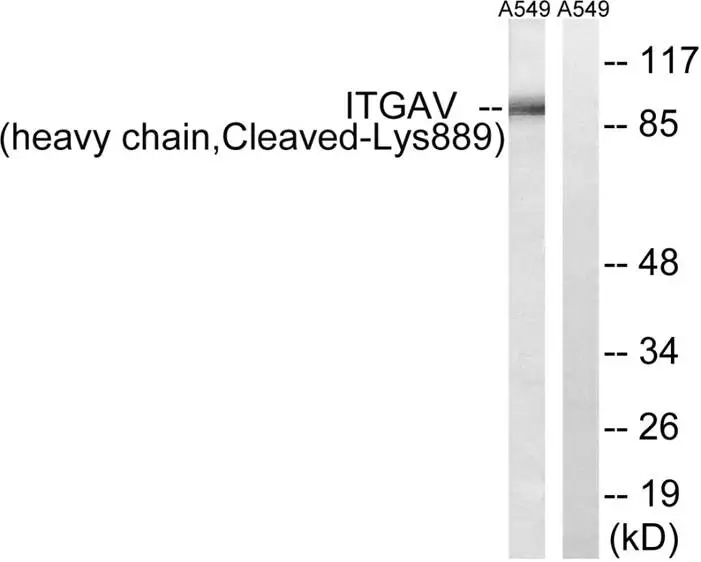
WB analysis of MCF7 cell lysate using GTX54357 Integrin alpha V antibody. Dilution : 1:3000 Loading : 25microg per lane
Integrin alpha V antibody
GTX54357
ApplicationsWestern Blot, ImmunoHistoChemistry, ImmunoHistoChemistry Paraffin
Product group Antibodies
TargetITGAV
Overview
- SupplierGeneTex
- Product NameIntegrin alpha V antibody
- Delivery Days Customer7
- Application Supplier NoteWB: 1:500 - 1:2000. IHC-P: 1:50 - 1:200. *Optimal dilutions/concentrations should be determined by the researcher.Not tested in other applications.
- ApplicationsWestern Blot, ImmunoHistoChemistry, ImmunoHistoChemistry Paraffin
- CertificationResearch Use Only
- ClonalityPolyclonal
- ConjugateUnconjugated
- Gene ID3685
- Target nameITGAV
- Target descriptionintegrin subunit alpha V
- Target synonymsCD51, MSK8, VNRA, VTNR, integrin alpha-V, antigen identified by monoclonal antibody L230, integrin alphaVbeta3, integrin, alpha V (vitronectin receptor, alpha polypeptide, antigen CD51), vitronectin receptor subunit alpha
- HostRabbit
- IsotypeIgG
- Protein IDP06756
- Protein NameIntegrin alpha-V
- Scientific DescriptionThe product of this gene belongs to the integrin alpha chain family. Integrins are heterodimeric integral membrane proteins composed of an alpha subunit and a beta subunit that function in cell surface adhesion and signaling. The encoded preproprotein is proteolytically processed to generate light and heavy chains that comprise the alpha V subunit. This subunit associates with beta 1, beta 3, beta 5, beta 6 and beta 8 subunits. The heterodimer consisting of alpha V and beta 3 subunits is also known as the vitronectin receptor. This integrin may regulate angiogenesis and cancer progression. Alternative splicing results in multiple transcript variants. Note that the integrin alpha 5 and integrin alpha V subunits are encoded by distinct genes. [provided by RefSeq, Oct 2015]
- Storage Instruction-20°C or -80°C,2°C to 8°C
- UNSPSC12352203
References
- Furin Inhibitors Block SARS-CoV-2 Spike Protein Cleavage to Suppress Virus Production and Cytopathic Effects. Cheng YW et al., 2020 Oct 13, Cell RepRead more






